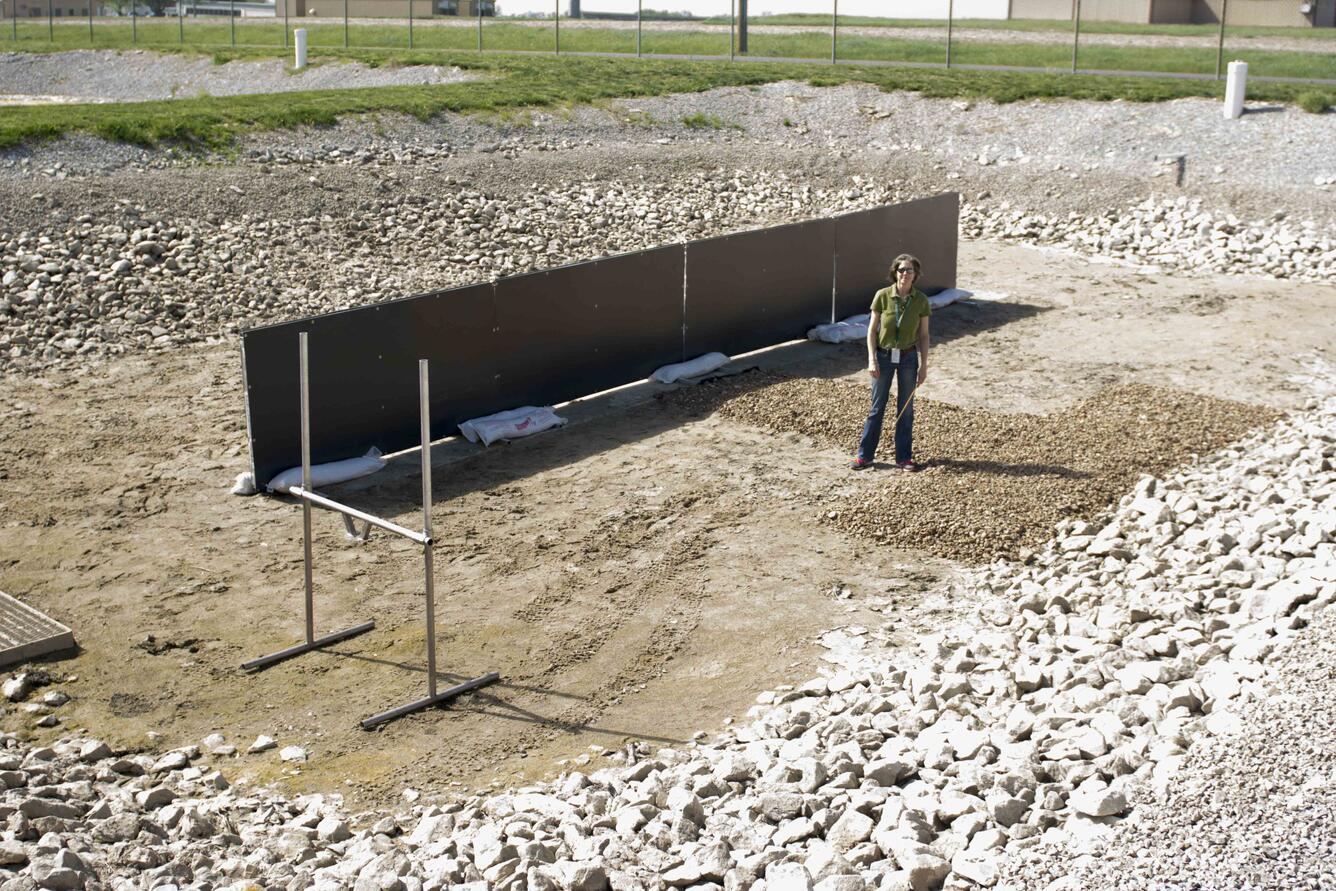We Just Wanna See What Happens Down There!
June 5, 2014
By Aaron DeLonay and Dr. Robert Jacobson
Pallid sturgeon exist almost exclusively in habitats that are notoriously difficult to study. Particularly due to river flow and turbidity, there are many aspects of sturgeon behavior which scientists struggle to observe and truly understand. One such behavior which Comprehensive Sturgeon Research Project (CSRP) scientists are currently working to understand better is the tendencies, habits, and mechanics of egg deposition and fertilization. Despite being able to track pallid sturgeon and occasionally identify spawning locations, spawning behaviors in the wild have yet to be thoroughly documented.

Scientists reproduced sturgeon spawning habitat in a controlled environment at the Columbia Environmental Research Center (see Figure 1) in an attempt to study spawning and egg deposition up close. Water circulators set up within a 90×65 feet pond simulated the river current while gravel bars arranged both parallel and perpendicular to the pond banks simulated the two reproductive substrate arrangements believed to be utilized in the wild. An acoustic Doppler current profiler (ADCP) (see Figure 2) created a three dimensional profile of the pond’s currents (see Figure 3) prior to fish introduction and a DIDSON imaging sonar was employed to visually monitor the behavior of the fish over the course of the study. Before being released into the pond, reproductively-ready sturgeon were injected with hormones to induce ovulation in females or sperm production in the males. If all goes as it should females induced with hormones should ovulate and deposit their eggs within 12 to 24 hours of the final injection and release into the pond.


The initial trial was conducted with shovelnose sturgeon. Subsequent trials will be conducted with pallid sturgeon. The reproductive physiology of both species is very similar, and the mechanisms of ovulation and egg deposition are likely similar as well. While shovelnose sturgeon may not have the same spawning behaviors or prefer the same spawning habitat as pallid sturgeon, the two species are known to hybridize where habitat has been highly modified. It is believed a better understanding of spawning behaviors will translate to a better understanding of habitat requirements for spawning adults and factors that may reduce the threat of hybridization.

